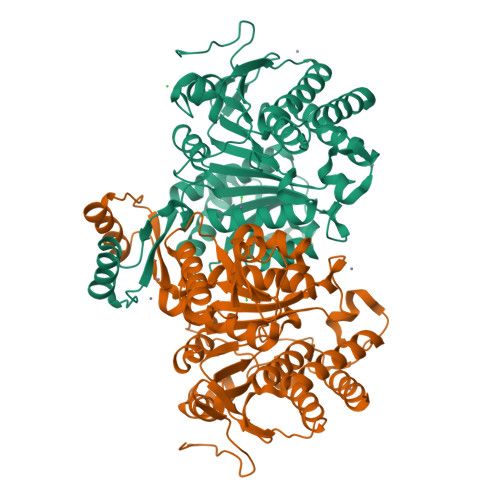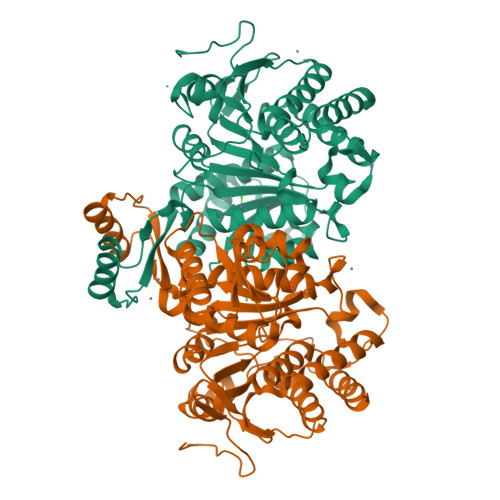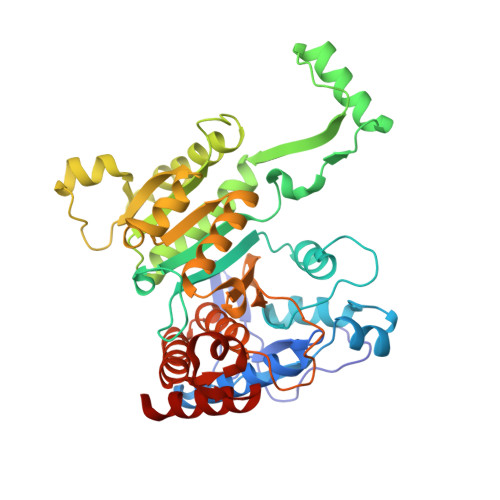Thermal Stability of Isocitrate Dehydrogenase from Archaeoglobus Fulgidus Studied by Crystal Structure Analysis and Engineering of Chimers
Stokke, R., Karlstrom, M., Yang, N., Leiros, I., Ladenstein, R., Birkeland, N.K., Steen, I.H.(2007) Extremophiles 11: 481
- PubMed: 17401542
- DOI: https://doi.org/10.1007/s00792-006-0060-z
- Primary Citation of Related Structures:
2IV0 - PubMed Abstract:
Isocitrate dehydrogenase from Archaeoglobus fulgidus (AfIDH) has an apparent melting temperature (T(m)) of 98.5 degrees C. To identify the structural features involved in thermal stabilization of AfIDH, the structure was solved to 2.5 A resolution. AfIDH was strikingly similar to mesophilic IDH from Escherichia coli (EcIDH) and displayed almost the same number of ion pairs and ionic networks. However, two unique inter-domain networks were present in AfIDH; one three-membered ionic network between the large and the small domain and one four-membered ionic network between the clasp and the small domain. The latter ionic network was presumably reduced in size when the clasp domain of AfIDH was swapped with that of EcIDH and the T (m) decreased by 18 degrees C. Contrarily, EcIDH was only stabilized by 4 degrees C by the clasp domain of AfIDH, a result probably due to the introduction of a unique inter-subunit aromatic cluster in AfIDH that may strengthen the dimeric interface in this enzyme. A unique aromatic cluster was identified close to the N-terminus of AfIDH that could provide additional stabilization of this region. Common and unique heat adaptive traits of AfIDH with those recently observed for hyperthermophilic IDH from Aeropyrum pernix (ApIDH) and Thermotoga maritima (TmIDH) are discussed herein.
Organizational Affiliation:
Department of Biology, University of Bergen, PO Box 7800, Jahnebakken 5, 5020, Bergen, Norway. Ida.Steen@bio.uib.no


















